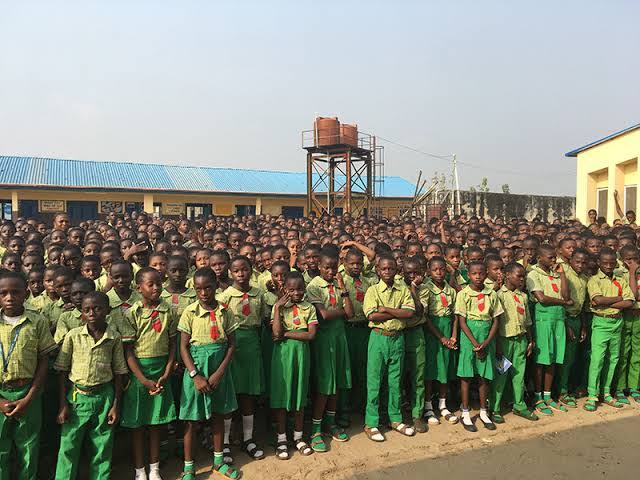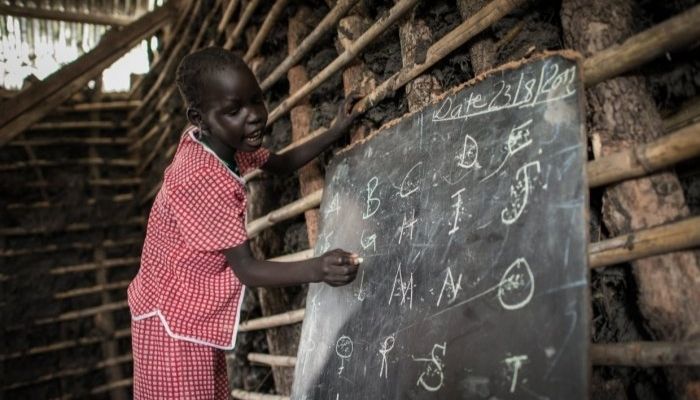In the midst of Nigeria’s long-entrenched educational crisis, a remarkable development is unfolding. The Nigeria Education Information Management System (NEIMS), a cloud-based, real-time data infrastructure, is offering something stakeholders have sought for decades: transparent, actionable insights into student enrolment, attendance, and progression patterns. More importantly, NEIMS may mark the turning point in how Nigeria conceives, monitors, and reforms its faltering education system.
Table of Contents

From Certificates to Real‑Time Data: Why NEIMS Is Different
Until now, Nigeria’s education sector has largely depended on outdated, bureaucratic record-keeping. Data came slowly, if at all, and often masked deeper issues behind national averages. Public schools still operate under colonial-era syllabi, emphasising rote memorisation to meet syllabus quotas rather than build thinking skills or adaptability.
NEIMS changes everything. Piloted across 11 states so far, it has created individual digital profiles for more than 12 million primary pupils. That number collapses to just 1.76 million in Junior Secondary School and 1.23 million by Senior Secondary—revealing a staggering loss of nearly nine million students between Primary 6 and SSS 3. No longer abstract, the dropout crisis is now visible—every missing child becomes a digital red flag.
The Numbers Behind the Crisis
Before NEIMS, stakeholders spoke in general terms—migration, cultural expectations, and poverty. Now the numbers tell a harsh story:
- Primary school enrolment: ~12 million
- Junior Secondary School enrolment: ~1.76 million
- Senior Secondary School enrolment: ~1.23 million
- Estimated dropout between Primary and SSS: nearly 9 million children
These are not simply statistics. Behind each figure lies a personal narrative—dreams halted before they even begin.
Why NEIMS Has Sparked Hope
Nigeria’s Minister of Education, Dr Tunji Alausa, has long championed data as the missing ingredient in education reform. NEIMS is his first tangible success in delivering that vision. By offering real-time tracking of school-level metrics—attendance, progression, student health, behavioural records—it enables timely interventions, targeted support, and dynamic resource allocation.
This shift is more than technological—it’s cultural. It’s about accountability. Nigeria is moving from a system that records certificates to one that values every child’s journey.
Connecting the Dots: Recent Complementary Reforms
NEIMS is part of a broader strategic overhaul. The Federal Ministry of Education is simultaneously rolling out initiatives that work in harmony:
- The proposed transition to a 12‑year uninterrupted basic education model (merging primary and secondary into one seamless structure) is under policy review. If adopted, it would replace the colonial 6‑3‑3‑4 system.
- New national curriculum launching in September 2025, emphasising Nigerian history, vocational skills, and AI literacy—all developed via stakeholder-driven technical working groups.
- UBEC‑led School-Based Management Committee (SBMC‑SIP) and teacher development programmes distributing ₦2 billion to support infrastructure improvements, WASH facilities, community-driven governance, and professional development for over 223,000 educators.
- EDU REVAMP Communities of Practice (CoPs) initiative to build teacher collaboration networks through a digital platform offering training, rewards, and peer learning hubs.
- Hope‑Ed programme, targeting the integration of 10 million out‑of‑school children by 2027 and incorporating AI into the basic education curriculum.
Collectively, these initiatives reflect President Bola Tinubu’s Renewed Hope Agenda, which places human capital development and digital transformation at the heart of Nigeria’s future.

How NEIMS Makes Reform Real
- Individual Tracking: Each child now has a unique digital identity. Tracking attendance, movement through grades, and even health history.
- Early Warnings: NEIMS can flag dropouts or chronic absenteeism in real time, enabling prompt support—whether counselling, financial aid, or engagement with families.
- Resource Mapping: By pinpointing the schools where dropouts cluster, policymakers can better allocate teachers, infrastructure, and funding.
- Policy Testing: As new curricula or models roll out, NEIMS can provide timely feedback on uptake, retention, and learning outcomes, making reforms data‑driven rather than aspirational.
Why It Matters: Education as National Rescue
Nigeria today faces complex, interlocking challenges: rising numbers of out-of-school children (estimated at 18.3 million in 2024, the highest globally), youth unemployment, insecurity, and economic inequity. Within this context:
- Girls at Risk: In regions like Borno, Adamawa, and Yobe, girls are often forced to drop out due to early marriage, displacement, or household duties.
- Boys’ Trajectory: Many fulfil familial responsibilities through informal work, drifting into street vending or worse.
NEIMS does not solve these broader problems alone, but it shines a light on them. For the first time, those at risk are visible at scale.
Challenges and the Road Ahead
While NEIMS is transformative, several challenges remain:
- Data Quality & Coverage: So far, only 11 states are piloting NEIMS. Scaling nationwide demands reliable internet connectivity, trained local staff, and buy‑in at sub‑national levels.
- Privacy & Security: Protecting sensitive student data requires clear policies and secure cloud protocols, especially in regions with conflict or instability.
- Political Will: Sustaining momentum over election cycles will require consistent oversight, budget allocation, and public-private partnerships.
- Stakeholder Trust: Parents, teachers, and school communities must see tangible benefits—improved teaching, reduced dropout, fair resource distribution—to embrace NEIMS long term.
What Stakeholders Are Saying
Education experts across Nigeria’s media and opinion pages describe NEIMS as the “missing telescope” in Nigeria’s sector reforms—something that turns vague notions into visible data points. Columnists like Dakuku Peterside have written about walking into Nigerian public schools and feeling the legacy of colonial structures, but now, feeling, albeit cautiously, a shift in momentum through data-driven policy tools.
Moving from Crisis to Clarity
Will NEIMS alone save Nigeria’s education? Of course not. But it is no longer enough to debate curricula, reform models, or budget allocations without real-time accountability. NEIMS provides the backbone for:
- Evidence-led decisions rather than ceremonial declarations.
- Swift, local responses rather than slow centralised mandates.
- Renewed public confidence that every child counts—not just as a number, but as an underserved individual with a future.
A New Dawn?
NEIMS signals new dawn for Nigeria’s broken education system—that phrase is not just optimistic rhetoric. It reflects, for the first time, a system beginning to see itself as a network of children and communities, rather than a faceless bureaucracy.
This is the kind of story Nigeria’s education sector deserves: not a policy paper, not media hype, but substance—built on data, accountability, and visible human impact.

Summary Table: NEIMS at a Glance
| Feature | Role & Impact |
|---|---|
| Cloud‑based, real-time data | Enables tracking per child, per school |
| Enrollment analytics | Reveals nearly 9 million dropouts between P6 and SSS3 |
| Intervention flags | Automatic alerts for absentees, dropouts, performance at risk |
| Policy testing tool | Automatic alerts for absentees, dropouts, and performance at risk |
| Resource optimisation | Informs targeted investment in infrastructure, teacher distribution |
Looking Ahead: What Comes Next
- Nationwide Roll‑Out: Scaling NEIMS across all 36 states and FCT by 2026.
- Integration with Curriculum Reform: Tracking student outcomes once the new curriculum arrives (from September 2025).
- Community Engagement: Empowering School-Based Management Committees to use NEIMS data locally for improvements under SBMC‑SIP frameworks.
- Teacher Empowerment: Aligning digital data with professional development through EDU Revamp Communities of Practice.
- Bridging Gaps: Supporting Hope‑Ed targets to reintegrate out‑of‑school children, especially in conflict‑affected zones.
Conclusion
Nigeria’s education system is at a crossroads. For too long, reforms have been slogans and schemes. NEIMS shifts the narrative: from denial and obscured averages to visible crises and measurable change. It signals a new dawn—one where every child’s journey is tracked, every dropout counted, and every intervention targeted.
If that dawn holds, Nigeria may finally begin to heal its broken education system, with data as its compass and every child as its purpose.
Join Our Social Media Channels:
WhatsApp: NaijaEyes
Facebook: NaijaEyes
Twitter: NaijaEyes
Instagram: NaijaEyes
TikTok: NaijaEyes
READ THE LATEST EDUCATION NEWS














![Mr Macaroni Drops Blistering Remark: ‘APC Filled with Most Corrupt People’ as He Slams Tinubu’s Controversial Pardon for Criminals=]] Mr Macaroni](https://naijaeyesblog.com/wp-content/uploads/2025/03/Mr-Macaroni-1-1-180x135.avif)

![Chaos Erupts in Abuja Hotel as BBNaija Star Phyna Sparks Fierce Scene Over Alleged N200,000 Dispute [VIDEO] Phyna](https://naijaeyesblog.com/wp-content/uploads/2024/11/A-Picture-of-Phyna-BBNaija-180x135.jpg)























